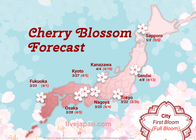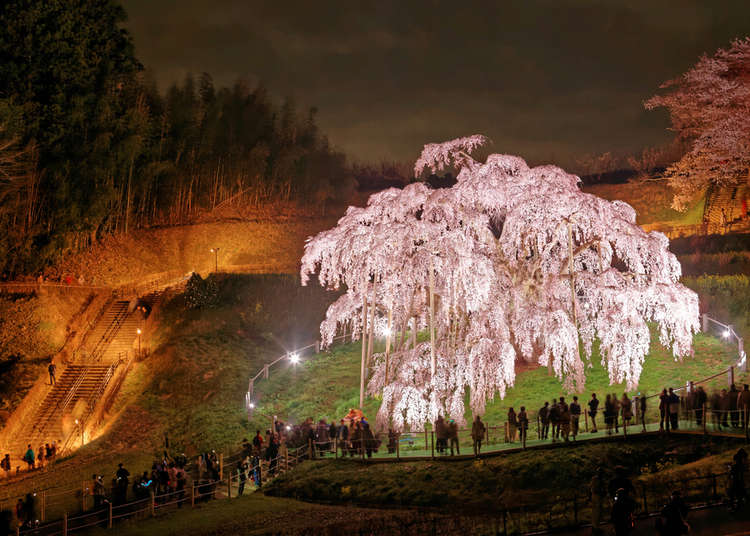
On October 12, 1922, the Japanese government declared five specific cherry trees as National Natural Monuments. Collectively, these trees are known as “Nihon Godai Zakura,” the Five Great Sakura Trees of Japan.
These Japanese sakura trees have existed for centuries, each accompanied by its own unique history and significance within the culture. Let’s take a look at these five fascinating cherry trees.
1. Miharu Takizakura (Miharu, Fukushima)
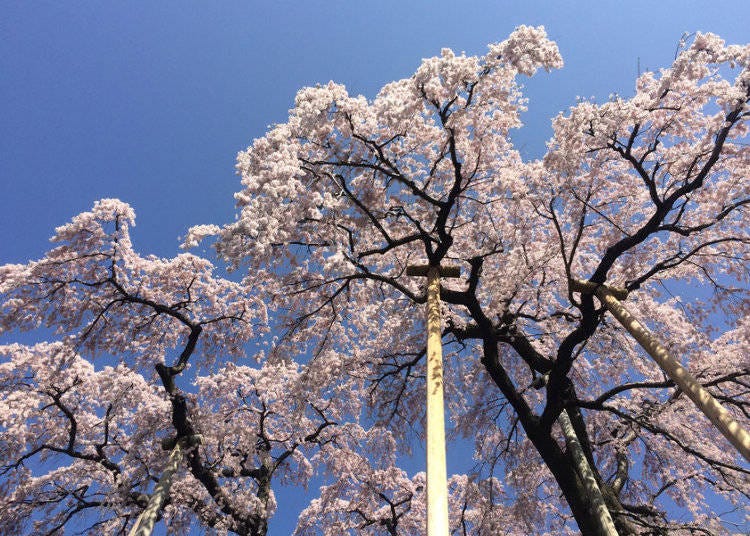
Usual Blooming Period: Mid to late April
This Weeping Cherry tree (called ‘shidarezakura’ in Japanese) is over 1,000 years old. It has been designated as a National Treasure and is considered by many to be the best tree in all of Japan. Each year, nearly half a million people visit this historic Japanese sakura tree.
Miharu Takizakura has withstood considerable trials throughout the duration of its long life. While there was some damage to the tree after heavy snowfall in 2005, it managed to survive the 2011 Tohoku earthquake and tsunami unharmed. Miharu Takizakura's resilience has made it a symbol of hope in Japan.
-

-
Address
Sakurakubo, Taki, Miharu-machi, Tamura-gun, Fukushima, 963-7714
View Map -
Nearest Station
Miharu Station (Ban-etsuto Line)
15 minutes by bus
- Phone Number 0247-62-3690
-
Address
Sakurakubo, Taki, Miharu-machi, Tamura-gun, Fukushima, 963-7714
2. Ishitokaba Zakura (Kitamoto, Saitama)
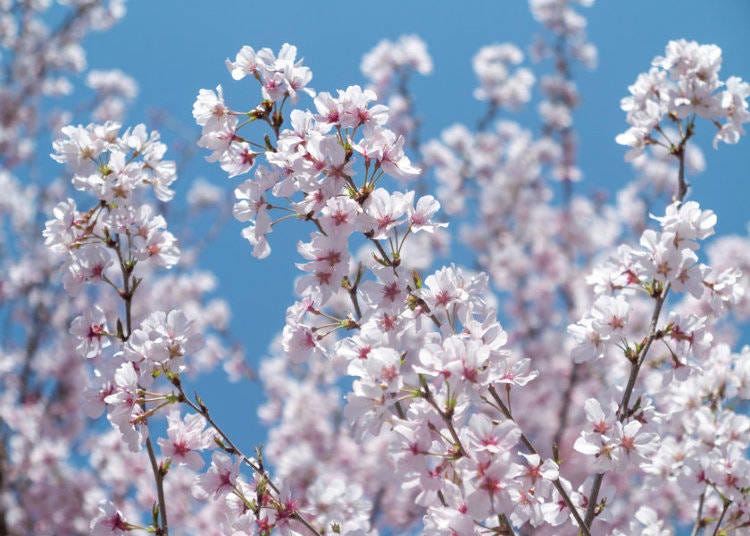
Usual Blooming Period: Middle of April
Ishitokaba Zakura has been standing tall for upwards of 800 years. In addition to its old age, Ishitokaba Zakura boasts another remarkable feature: it is believed to be the only natural Kabazakura tree in the world, a crossbreed between Edohigan and Yamazakura varieties.
-
Ishitokaba Zakura石戸蒲ザクラ
- Address Kitamotoshi Ishitoshuku 3-119, Saitama (Tokoji Temple grounds)
- Phone Number 048-594-5566
3. Yamataka Jindai Zakura (Hokuto, Yamanashi)
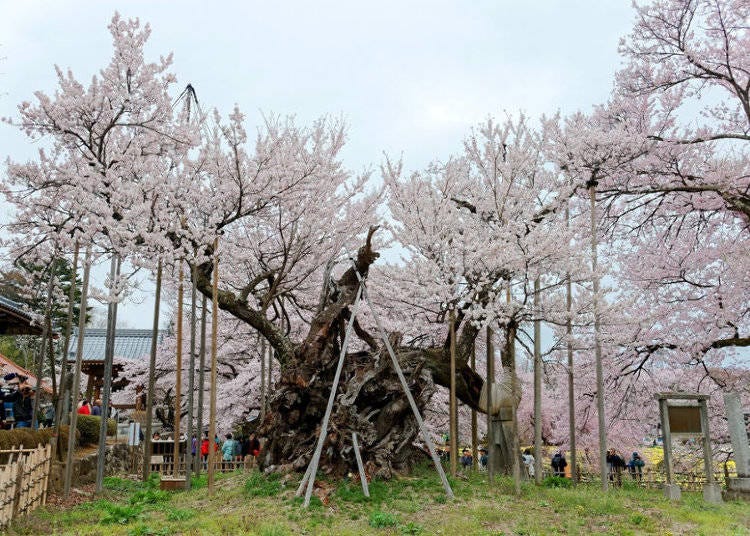
Usual Blooming Period: Early to mid-April
Believed to be somewhere in the range of 1800–2000 years old, Yamataka Jindai Zakura is one of the oldest trees in Japan. This Edohigan (double weeping rosebud cherry) tree has a root circumference of 44.3 feet (13.5 meters), and is a Natural Monument.
According to legend, prominent Buddhist monk Nichiren saw Yamataka Jindai Zakura in a weakened state, and upon praying for it, was able to restore this Japanese sakura tree back to health.
-
Yamataka Jindai Zakura山高神代桜
- Address 2763 Mukawacho Yamataka, Hokuto, Yamanashi 408-0306
4. Kariyado no Gebazakura (Fujinomiya, Shizuoka)
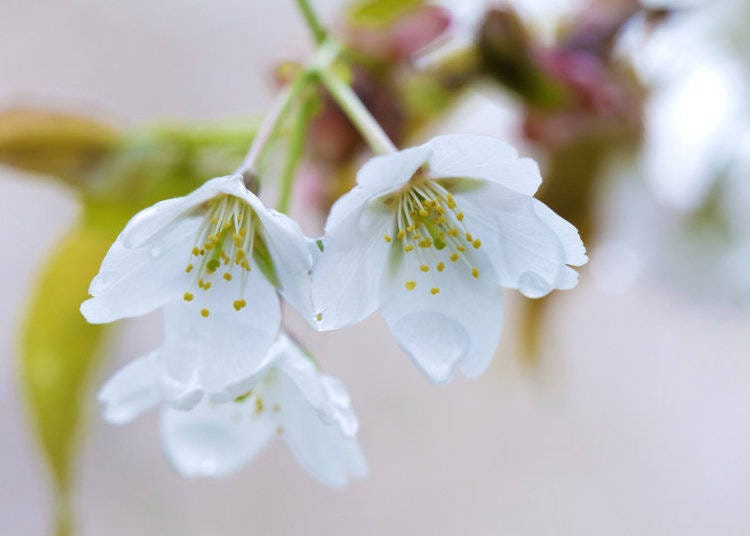
Usual Blooming Period: Middle of April
This 800-year-old Yamazakura (wild cherry) has been named as both a Natural Monument and a National Natural Treasure. At its peak, the tree reached a height of over 114 feet (35 meters) tall but has since weakened after repeated typhoons.
The Japanese sakura tree is said to have inspired the following poem by Japan's 15th Edo shogunate Tokugawa Yoshinobu:
“aware sono koma nominarazu miru hito no kokoro wo tsunagu yamazakura kana”
In English, this translates to:
“Alas, does it not only hold horses but also the beholders’ hearts, this wild cherry tree.”
The poem references Minamoto no Yoritomo (the first shogun of the Kamakura shogunate) visiting the cherry tree. He is said to have strapped his horse to Kariyado no Gebazakura's trunk, and just like the animal was tied to the sakura, Tokugawa Yoshinobu felt that people’s hearts are tied to its magnificent beauty as well.
-
Kariyado no Gebazakura狩宿の下馬桜
- Address Kariyado 98-1, Fujinomiya, Shizuoka 418-0117
- Phone Number 054-422-1155
5. Usuzumi-Zakura (Motosu, Gifu)
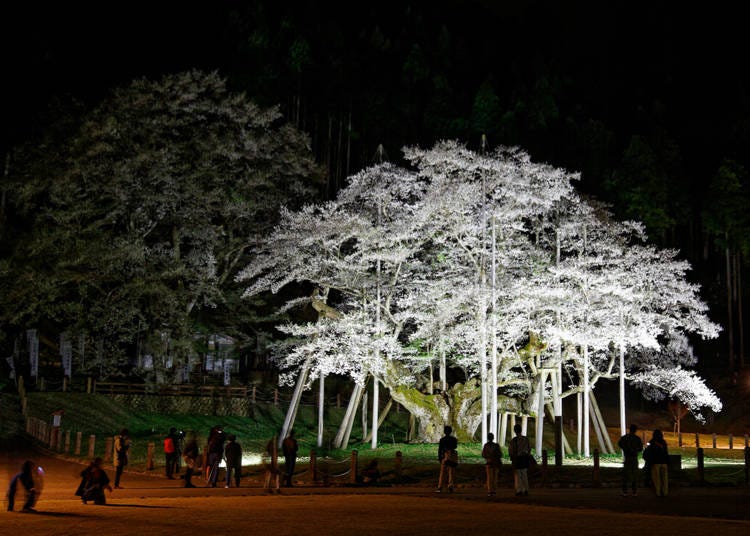
Usual Blooming Period: Early to mid-April
The characters for "usuzumi" translate to "pale ink," referring to a light grey color sometimes seen in Japanese calligraphy. Just after reaching full blossom, the flowers of Usuzumi-Zakura change to a subtle grey color, hence its name.
This Edohigan tree has over 1,500 years of history, beginning in the late 5th century, when it is rumored to have been planted by Emperor Keitai. In the 20th century, the tree began to wither. In 1949, after considering the plight of the famous tree, a Gifu dentist by the name of Toshiyuki Maeda began a month-long project of root grafting in order to save it.
The Japanese sakura tree was fully revitalized and has been able to withstand typhoons, among other trials. It is yet another cherry tree that has been designated as a National Monument of Japan, as well as being the subject of artwork, songs, and even a postage stamp.
-
Usuzumi-Zakura淡墨桜
- Address Jodan-995 Neoitasho, Motosu, Gifu 501-1524
Living Legends
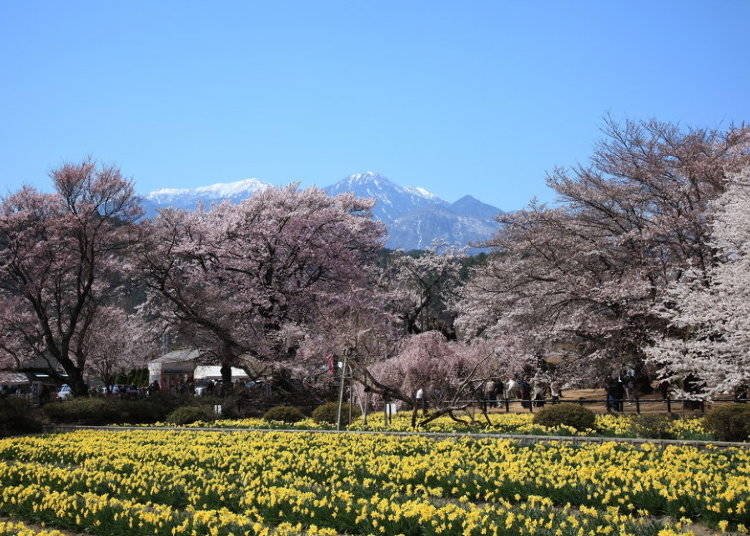
These Five Great Sakura Trees exemplify the exquisite nature of Japanese cherry blossoms, while their rich histories add an even deeper layer to their beauty.
If you are able to visit even one of these incredible Japanese sakura trees, it is highly recommended you do not pass up the chance to see a real living legend!
- Category
*Prices and options mentioned are subject to change.
*Unless stated otherwise, all prices include tax.
Popular Tours & Activitiess
Recommended places for you
-
Appealing

Rukku and Uohei
Izakaya
Sapporo / Chitose
-

ISHIDAYA Hanare
Yakiniku
Kobe, Sannomiya, Kitano
-

Kanzenkoshitsuyakinikutabehodai Gyugyu Paradise Sannomiya
Yakiniku
Kobe, Sannomiya, Kitano
-

Jukuseiniku-to Namamottsuarera Nikubaru Italian Nikutaria Sannomiya
Izakaya
Kobe, Sannomiya, Kitano
-

Kambei Sannomiyahonten
Yakiniku
Kobe, Sannomiya, Kitano
-
Goods

Yoshida Gennojo-Roho Kyoto Buddhist Altars
Gift Shops
Nijo Castle, Kyoto Imperial Palace
-
Ad

Discover the "Miraculous Forest" in the Heart of Tokyo: The Institute for Nature Study (9 Minutes from JR Meguro Station)
-

First Japan Cherry Blossom 2026 Forecast Announced! Here's When & Where to See Sakura in Japan
-
Ad

[Tokyo, Ueno] A Journey to the Sacred Grounds of the Tokugawa Shoguns: A Complete Guide to the "EDO SHOGUN’S LEGACY TRAIL TOUR" – Where Special Access, Modern Art, and Digital Innovation Converge
by: Guest Contributor
-

Japan’s Shinkansen Is About to Change Travel in an Unexpected Way
by: Guest Contributor
-
Ad

(Opening in Jan 2026) 'THE SUMO LIVE RESTAURANT HIRAKUZA GINZA TOKYO!' 5 Exciting Ways to Experience the World of Sumo!
-

Strawberries, Style, and Tokyo’s Coolest Neighborhood: Winter Afternoon Tea in Kichijoji
by: Guest Contributor
-

Japanese Foods List: 16 Crazy Tasty Japanese Tohoku Region Dishes You've Never Heard of
by: Guest Contributor
-

Summer Adventure! Sapporo Day Trip to Enjoy Gorgeous Lavender Fields
-

Complete Guide to Buying Japanese Medicine in Japan: Phrases and Vocabulary You Need to Know
-

Your Trip to Fukushima: The Complete Guide (Activities, Hotels, Savers & More)
-

Autumn in Japan 2025: Fall Foliage Forecast & Where to Enjoy the Colorful Leaves (+Tour Info)
-

10 Dreamy Hydrangea Gardens Near Kyoto and Osaka For Flower Lovers
by: WESTPLAN
- #best sushi japan
- #what to do in odaiba
- #what to bring to japan
- #new years in tokyo
- #best ramen japan
- #what to buy in ameyoko
- #japanese nail trends
- #things to do japan
- #onsen tattoo friendly tokyo
- #daiso
- #best coffee japan
- #best japanese soft drinks
- #best yakiniku japan
- #japanese fashion culture
- #japanese convenience store snacks














